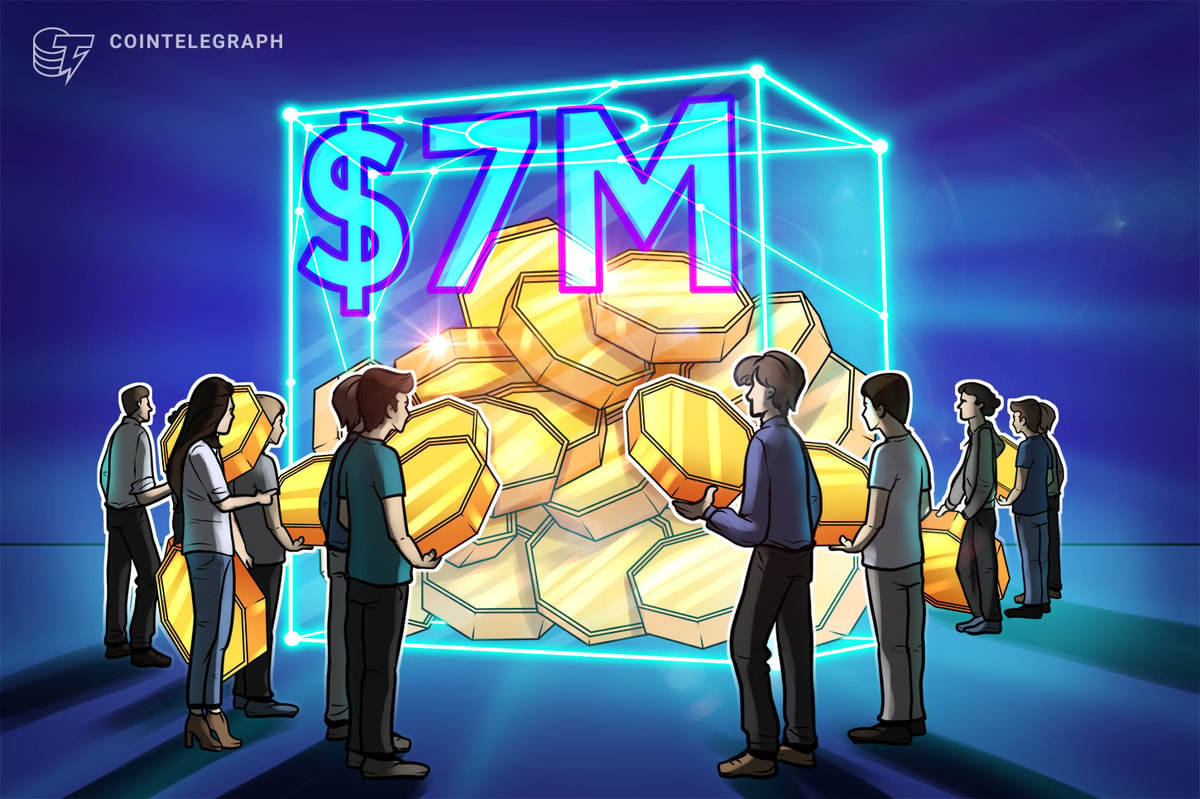Alchemix is a DeFi project that enables users to collateralize their loans. Alchemix’s twist is that it tokenizes collateral as another asset, which is usable in other parts of the market. That synthetic collateral is then borrowed, automatically paying off the original loan without inducing liquidation risk.
How Does Alchemix Work?
With hundreds of lending dApps available across dozens of blockchains, it is difficult to stand out from the crowd. Some use classic interest rate models while others, such as Liquity, mint stablecoins equivalent to the loan collateral locked.
Alchemix provides an auto-repaying loan. Here is how it works:
- The borrower deposits a collateral into a smart contract, either ETH or DAI stablecoin, to receive a loan.
- Alchemix protocol then automatically deposits that collateral into another platform that generates yield. For example, the very popular yield farming Yearn Finance. Specifically, Yearn Finance vaults.
- The collateral then generates a yield of its own to pay the original loan.
For example, let’s say a borrower deposits $20,000 worth of DAI stablecoin. If we stick to Alchemix’ rule (ALCX token holders can vote to lower or raise it) for a 150% DAI overcollateralization, that $20k would be enough for the smart contract to issue a $13,333 loan. These high ratios are required to issue non-liquidating loans.
When Alchemix deposits the loan into Yearn Finance vault at a 4% annual percentage rate (APR), it would take over a decade for the loan to auto-repay itself. Nevertheless, the borrower can then steadily withdraw the collateral because its value is increasing in the Yearn Finance vault.
Moreover, Yearn Finance vaults offer customized smart contracts for each vault. For example, they can govern which token to borrow to farm another token, and then where to sell those farmed tokens for the best price.
So, given the right market conditions, Yearn Finance vaults may offer double-digit yields or higher. The Alchemix borrower’s loan would then be auto-repaid much quicker, or the borrower could withdraw the collateral faster.
This is why gradual loan repayment in Alchemix is a feature of its own.
Alchemix v2 Remake
In March 2022, Alchemix upgraded and introduced significant flexibility. Borrowers get to pick their own yield strategies and types of token collaterals. This means that Alcehmix users can generate their own yield aggregators by mix-matching strategies with collateral types.

MakerDAO Set To Deposit $100M In Bespoke Yearn Vault
Partnership Between DeFi Stalwarts Must Be Confirmed By Executive Vote
Previously, only DAI and ETH were supported. Additionally, Alchemix integrated Vesper and Aave vaults alongside Yearn Finance vaults. Intermingling smart contracts with other platforms is a unique DeFi feature called composability, as each separate component creates a new product. In the case of Alchemix, new yield-generating strategies.
With that said, the newcomer vaults are still in beta. Furthermore, bear market conditions in late 2022 have made Alchemix yields extremely low, no matter which strategy is employed.
The loan-to-value (LTV) ratio is at maximum 50% before a liquidation can occur, regardless of stablecoins used as a collateral. But because stablecoins are…stable, their value is exceedingly unlikely to depreciate vs. the issued loan, making it very unlikely that liquidation occurs.
You may also have noticed that these vaults have prefixes, such as DAI + yvDAI, indicating that the DAI collateral was deposited in Yearn Vault (yv). This is the integral part of Alchemix innovation.
Borrowing Future Yield With Synthetic Stablecoins
When borrowers deposit their assets as collateral, be it USDT or DAI stablecoins, Alchemix’s smart contract mints a synthetic stablecoin equal to the value of the collateral, plus the yield that is yet to materialize. In other words, Alchemix tokenizes the borrower’s future yield and mints it as a synthetic asset.
This is Alchemix’s unique asset liberation feature. While the original deposit is locked in a yield-generating vault to repay the loan, the $10k yvUSDT (+future yield) is then released to be used as one sees fit.
The borrower can convert yvUSDT into USDT with the Alchemix’s swap feature, which supports Curve, Paraswap, and Zapper decentralized exchanges. In turn, the regular USDT stablecoin can then be exchanged for fiat money.
ALCX Tokenomics
ALCX token is the protocol’s main tool to enact DAO governance, which is Alchemix on-chain treasury. ALCX token holders often vote on how the treasury funds should be allocated and how the protocol should be tweaked and developed.
ALCX tokens could also be staked to earn more ALCX tokens. Additionally, users can stake ETH SLP (Axie Infinity) tokens to earn ALCX. As of November 2022, a third of ALCX is deployed for staking, while the rest are used to provide liquidity in both Ethereum and Fantom.
By 2027, there should be 2.8M ALCX as total supply, lowering weekly ALCX emission from 11k to steady 2.2k in the February milestone of 2024.
In May 2022, after Alchemix v2, the team announced that the token’s role would move beyond purely governance into funding development, incentivizing liquidity and growing Alchemix’ vault integrations.
To bolster this goal, they released veALCX, standing for vested escrow. You can read more about these new Alchemix tokenomics here.
Surprising Implications
If you’ve been following so far, you may have noticed that Alchemix is not what it seems at first glance:
- The 50% LTV, in addition to employing stablecoins, makes Alchemix effectively liquidation-proof.
- Overcollateralization makes Alchemix a protocol in which borrowers actually borrow from themselves.
- Neither is 50% a breakable liquidity threshold (especially for stablecoins), nor is there any interest rate applied.
- Because users set their own repayment schedule, it is a risk-free credit line.
Put another way, Alchemix places a price tag on only the opportunity cost from the deposited collateral. It is the borrower who provides their own capital for the loan, making them both a borrower and a liquidity provider (lender).
This implies that opportunity cost is highly dependent on the yield-generating strategies employed in Alchemix’s vaults. So, the only real danger is for the yield to be so low that the loan is unpayable.
In traditional finance, this wouldn’t have been possible because there are other costs involved in running a bank, from fees to salaries. In the case of Alchemix, there are no such costs because automated smart contracts displace those traditional costs.
Who Created Alchemix?
Unfortunately, the names of the team members are unknown and they still remain anonymous. The team behind it went by the name Scoopy Trooples, and launched Alchemix in February 2021.
There is a reason why Alchemix is so stablecoin-oriented, besides the lack of volatility. Initially, ETH and DAI stablecoin were supported, with ETH overcollateralized at 400% and DAI at 200%. Nevertheless, one ETH vault was exploited, making users able to withdraw 2,200 ETH without repaying their debt.
To recover the funds, the Alchemix team launched a reward campaign that integrated both NFTs and ALCX rewards. Thanks to these incentives, they were able to recover over half of the missing ETH.
Series Disclaimer:
This series article is intended for general guidance and information purposes only for beginners participating in cryptocurrencies and DeFi. The contents of this article are not to be construed as legal, business, investment, or tax advice. You should consult with your advisors for all legal, business, investment, and tax implications and advice. The Defiant is not responsible for any lost funds. Please use your best judgment and practice due diligence before interacting with smart contracts.
Read More: news.google.com










 Bitcoin
Bitcoin  Ethereum
Ethereum  Tether
Tether  XRP
XRP  Solana
Solana  USDC
USDC  Dogecoin
Dogecoin  Cardano
Cardano  TRON
TRON  Lido Staked Ether
Lido Staked Ether  Wrapped Bitcoin
Wrapped Bitcoin  Sui
Sui  Wrapped stETH
Wrapped stETH  Hyperliquid
Hyperliquid  Chainlink
Chainlink  Avalanche
Avalanche  Stellar
Stellar  Toncoin
Toncoin  LEO Token
LEO Token  Shiba Inu
Shiba Inu  Bitcoin Cash
Bitcoin Cash  Hedera
Hedera  Litecoin
Litecoin  USDS
USDS  WETH
WETH  Polkadot
Polkadot  Wrapped eETH
Wrapped eETH  Monero
Monero  Bitget Token
Bitget Token  Binance Bridged USDT (BNB Smart Chain)
Binance Bridged USDT (BNB Smart Chain)  Pepe
Pepe  Ethena USDe
Ethena USDe  Pi Network
Pi Network  Coinbase Wrapped BTC
Coinbase Wrapped BTC  WhiteBIT Coin
WhiteBIT Coin  Uniswap
Uniswap  Aave
Aave  Dai
Dai  Bittensor
Bittensor  NEAR Protocol
NEAR Protocol  Aptos
Aptos  OKB
OKB  Jito Staked SOL
Jito Staked SOL  BlackRock USD Institutional Digital Liquidity Fund
BlackRock USD Institutional Digital Liquidity Fund  Ethena Staked USDe
Ethena Staked USDe  Ondo
Ondo  Cronos
Cronos  Tokenize Xchange
Tokenize Xchange  Internet Computer
Internet Computer